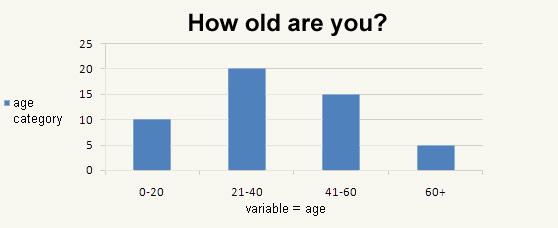Quantitative Research 2 – Formulating a Research Problem
Formulating a Research Problem
Welcome to our article discussing how to formulate a research problem. Strictly on their own, research problems are meaningless. Because of this, they must always be related to a specific topic that one wants to study. A research problem should be formulated using questions that are used to describe the given topic and from which you can then deduce certain hypotheses.
Example:
- Problem – Lack of customers at a café
- Research question – Are customers satisfied with the services at the café?
- Hypothesis – If customers are dissatisfied with services at the café, they will not come there.
We will continue on towards the units for correctly formulating a research problem, which are:
- Decomposing the topic (breaking down the topic into individual elements)
- Hypotheses
- Variable types*
Decomposing the Topic
Decomposition—the division of a topic into its component elements—is closely connected with the correct creation of research questions. Thanks to decomposition, you can put together “specifying” questions, with which you will describe the research problem better and then resolve it more successfully. Take care not to ask too many such questions, because they can make your research problem too tangled. Always try to focus only on the main areas and describe those briefly!
Example:
- Problem—Lack of customer interest in a travel agency
- Research question—Are our clients satisfied with the travel agency’s services?
- Specifying questions:
- Are clients satisfied with our sales agents?
- Are clients satisfied with our transport?
- Are clients satisfied with the trips themselves?
Decomposing a topic is also decisive for going on to correctly compose a hypothesis on the current state of the research problem and write questions for respondents.
Hypotheses
You could say that a hypothesis is a proposed prerequisite for the current state of the “project”—a prerequisite that you are trying to confirm or deny with your research. Forming hypotheses is the next-to-last step towards designing the survey itself. Forming a hypothesis comes after getting to know the problem, defining the research question, and decomposing that question.
When forming hypotheses, it is always appropriate to start from available and relevant data and predefined research questions. Then you just need to make use of this information to form hypotheses that you want to confirm or deny.
Example:
- Problem: After the car repair shop was reconstructed, fewer people went there.
- Research question: Are customers satisfied with the shop’s services?
- Decomposition of the research question:
- Are customers satisfied with the new repair prices?
- Are customers satisfied with the waiting time for repairs, which has increased since the reconstruction?
- Hypotheses:
- Customers are avoiding the car repair shop due to the increased price for repairs.
- Customers are avoiding the car repair shop due to the now-increased waiting time.
Examples of defined hypotheses:
- Example 1: A restaurant owner believes that his customers are extremely satisfied with the quality of the restaurant’s food. He will confirm or deny this belief through research.
- Example 2: A library is visited by university students. The director believes that higher education positively influences the frequency of library visits. She will confirm or deny this belief through research.
- Example 3: A company’s owners believe that customers would appreciate the option to make purchases over the internet. He will confirm or deny this belief through research.
Variable Types
In quantitative research, a variable means a property within a research question that can take on different values.
Example:
Question: How old are you? (this question contains a property that can take on different values)
- Value – 10-20
- Value – 21-40
- Value – 41-60
- Value – 61+
Variables are mainly used in questionnaires that are then statistically evaluated and edited into the form of graphs.
Before you start creating your questionnaire, you should know that various types of variables exist, and they are not the same. Variables are classified into three groups by the values they can take on:
- Interval (cardinal) – The value is a number, which you can compare with other numbers easily and determine by how much they differ. Age and pay belong in this category.
- Nominal – Nominal values are generally expressed in words. These include, for example, gender or marital status (male/female, single/married).
- Ordinal – Ordinal values may also be expressed in words, but unlike nominal values, they can be put in order. However, the amount by which they differ cannot be determined precisely. An example would be level of education (high school / university).
The next piece in this series covers sample selection, which is the last step before the actual process of asking respondents questions.
If you have any questions, suggestions, or remarks (on this series or otherwise), please don’t hesitate to contact us via Facebook, Twitter, G+ or e-mail.
Glossary
- Variable—a property that you are measuring, which can be expressed via specific values
- Decomposition—the dividing of a topic or area into components
- Hypothesis—the prerequisite for research (can be confirmed or denied)
- Respondent—a survey participant who answers questions
Create your own questionnaire or survey for free
Setting up your first survey is quick and straight forward. Choose from one of 100 predefined templates or create your own from the scratch. Start getting your first responses in 5 minutes.
Create your own survey





